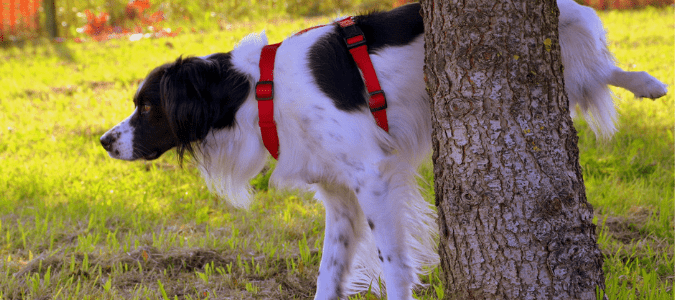
A homeowner with pets and a brown, patchy-looking lawn might wonder: Does dog pee kill grass? Maybe you’re not even a dog owner, but your neighbor’s pet has a habit of using your yard to do its business. Could this be a contributing factor?
The short answer is that it’s certainly possible. Due to the high protein content of most dogs’ diets, these animals’ urine contains a high concentration of nitrogen and salts, which can have a burning effect on grass and can cause yellow or brown spots in an otherwise healthy-seeming lawn. People with female dogs may notice even more concentrated spots of discoloration in their grass, since female dogs tend to squat to urinate in a single location, rather than relieving themselves in shorter spurts onto trees, bushes and fire hydrants, as male dogs typically do. Also, larger dogs pee in larger volumes than smaller dogs, so their daily urination can cause more damage to otherwise healthy grass.
The type of turf in your yard may be another contributing factor in whether dog pee is killing your grass. Homeowners with Kentucky bluegrass or Bermuda grass in their yards are more likely to notice brown patches, since these varieties of grass are particularly sensitive to high nitrogen content; for this same reason, homeowners with either of these grass varieties should be careful not to over-fertilize their lawns, since the nitrogen content of most fertilizers can be overpowering for these grasses. By contrast, fescue and perennial ryegrass are two grass types that are typically more resistant to dog urine. In fact, a certain amount of dog urine can actually act as a fertilizer on these types of grass.
Unfortunately, if your lawn has unsightly brown spots, fixing the problem may not be as simple as banning all four-legged furry friends from your yard. Discolored or dead-looking patches of grass are not always due to dog urine; in fact, dog pee isn’t nearly as harmful to grass as many people believe. In many cases, grass fungus and other lawn diseases are the true cause of discolored or dead grass patches.
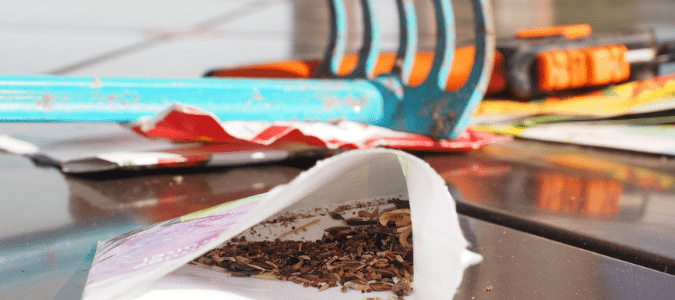
Dog Urine Grass Repair Tips
Here’s a quick check you can use to determine what may be causing discoloration in your lawn: Gently pull on a few blades of the discolored turf. If the roots remain securely attached to the ground, dog urine could be the issue. If the blades of grass are weak at the roots, however, and it’s easy to pull them out, some type of lawn disease may be the problem.
If you believe dog pee is the culprit of discolored spots on your lawn, there are a few solutions, as well as preventative measures that you can try to restore your grass to a lush, uniformly green expanse.
For the first method, you’ll need a rake, some finely ground limestone, some topsoil, some grass seeds of the variety you already have growing in your yard, and a gardening hose. The first step is to rake the patches of brown grass in order to remove as much of the dead grass as possible. Next, scatter a layer of the limestone powder over the discolored grass patch, and then use the hose to spray the area liberally to water it in. Since the ammonia in your dog’s urine makes the soil acidic, the lime helps to make the area more pH-neutral. Let the area sit for several days, and up to a week.
After that period of days, it’s time to spread a layer of topsoil over the patch and then follow it up with a few handfuls of grass seed sprinkled over the top. Once you’ve spread the seed, water liberally, and continue watering your lawn daily. Soon, with some luck, the spots that once were brown will be taken over by new grass growth. Keep in mind that you may want to put a barrier up while your grass is growing back or restrict your dog’s access to these spots to help promote healthy growth.
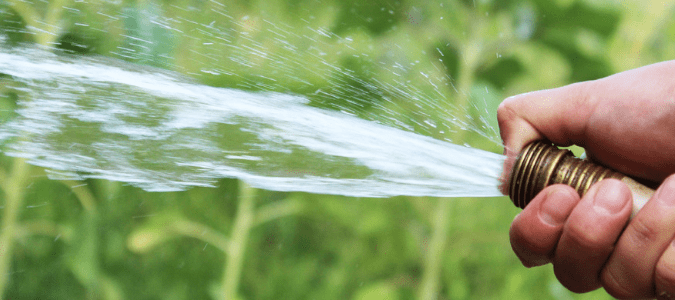
How To Treat Dog Urine Spots On Grass
If you know that dogs, whether your own or a neighbor’s, are using your yard to relieve themselves, you can actually spot-treat the urine-soaked areas to try to prevent grass discoloration. In one sense, this method is simple: Every time a dog pees on your grass, you simply head outside and use the garden hose to spray the area down, or empty a bucket of water over it. A good water soaking will dilute the nitrogen content of the urine, making it far less likely to cause yellow or brown patches in the grass.
In another sense, however, this method isn’t simple at all. It requires a good deal of time and attention, since it depends on knowing when dogs are in your yard and responding quickly every time, which isn’t very practical for many homeowners. Some people keep careful tabs of when and where their dogs pee by only allowing the dog outside on a leash. While this method may work for some homeowners, it can be too much work for others, who prefer just to let their pets out the door to run free in the yard.
Another issue with this method is that it uses lots of water, which may be too much of a financial and ecological drain for many homeowners’ tastes.
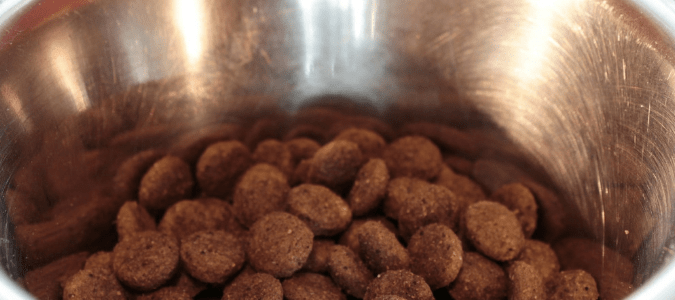
How To Stop Dog Urine From Killing Grass
Along with the methods already described, there are a few other steps and precautions you can take in attempting to keep your lawn looking fresh and green, even if you’re a dog owner.
One step is to make sure your pets are well-hydrated. It may seem counter-intuitive to keep their water bowl filled and encourage them to drink, since drinking more water naturally produces more urine. If your dog drinks plenty of water, however, its urine will have a higher water content, which naturally dilutes the nitrogen that can be so harmful to a healthy lawn.
You can also protect your lawn by strategically planning your landscape to include “safe zones” where your dog can pee freely without damaging any grass. Pea gravel and upright rocks can work well as designated urination zones, as can certain plants that can continue to flourish even with frequent nitrogen contact. These include ferns, sedum or anything with a silver leaf. Some homeowners also fence off portions of their yards as dog runs—areas landscaped with hardy grasses or gravel, where their dogs can run freely but stay separate from other, more vulnerable areas of the yard.
If discolored grass due to dog pee is really an issue in your yard, you might also consider ways to add more veggies to your dog’s diet, since protein-rich foods only increase the nitrogen content in their urine. Do remember, however, that a dog’s natural diet should include plenty of protein, and there are several types of fruits and vegetables that are not safe for dogs to consume. Check with your pet’s veterinarian about safe, healthful fruit and veggie snacks that you can include in your dog’s daily regimen, such as apple slices or chunks of carrot.
The simple truth is that your pooches (and those that belong to your neighbors) will need to relieve themselves somewhere, and grass is a very attractive spot for them to do so. If it’s not a problem with your own pets, you may consider what some homeowners do, which is adding a small sign asking dog owners to take pets elsewhere when Nature calls. You could also consider reducing the amount of grass overall in your yard or adding in artificial turf, which will also make for a more low-maintenance lawn. You could also modify the strip of your yard closest to the sidewalk by adding in a flowerbed with mulch. The mulch won’t be damaged by dog urine and the lack of ground cover will mean fewer plants will be impacted.
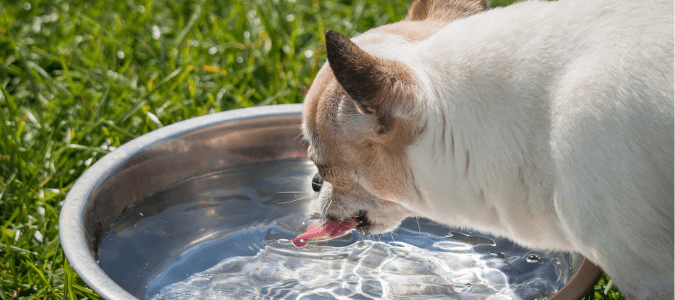
What Are Dog Rocks, And Can They Help My Lawn?
Maybe you’ve tried all the suggested measures for keeping your lawn green, and you still haven’t seen the results you were hoping to see. If so, you might try placing Dog Rocks in your pets’ water bowls. While you might rightfully assume that dog rocks are landscaping elements that your furry friends can urinate on rather than your grass, the answer is that these products are something entirely different. Some dog owners swear by these Australian rocks, which are used to filter out impurities like nitrogen, ammonia and tin from the water your dog drinks. This, in turn, is supposed to reduce the mineral content of Fido’s urine, thereby saving your lawn from those nasty yellow and brown “burn” patches.
Dog Rocks may have only limited benefits, however, and they can’t resolve existing yellow or brown spots on your lawn. They are also reported to work best in bowls filled with no more than two liters of water, and they should be replaced every two months, so it’s not as simple as adding these to your pet’s bowl and then forgetting about them.
Some pet owners also try feeding their dogs enzyme pills—supplements intended to balance the pH in the dog’s urine, thereby decreasing its harmful effect on grass. It is very important, however, to speak with your veterinarian before giving your pets these or any other pills or supplements. Enzyme pills contain DL-Methionine, which can be harmful to dogs with pre-existing health conditions such as liver or kidney disease.
ABC Can Keep Your Lawn Lush And Green All Year Long
Lawn care can be challenging when you have furry four-legged friends running around. For many busy homeowners, dashing outside to hose off your grass every time your dog goes out to pee just isn’t feasible—nor is the time-consuming physical labor of treating discolored spots in the lawn with minerals and seeds in hopes of stimulating new growth. And if your grass is actually suffering from a fungus or other lawn disease, that’s a problem that may need to be diagnosed and treated by a professional.
The lawn care specialists at ABC Home & Commercial Services are experienced in determining the true cause of dead or discolored patches of grass, and they will develop an effective treatment plan to quickly restore your lawn. Our specialists can also design an outdoor space that is perfect for your family, including spaces that work for your pets. Whether your issue is how to stop a dog from digging to creating spots for pets relieve themselves without damaging your grass, we’ve got you overed. We’ve helped Texas homeowners keep their yards looking great for generations, and we know just how to keep your grass green, healthy and thriving.
